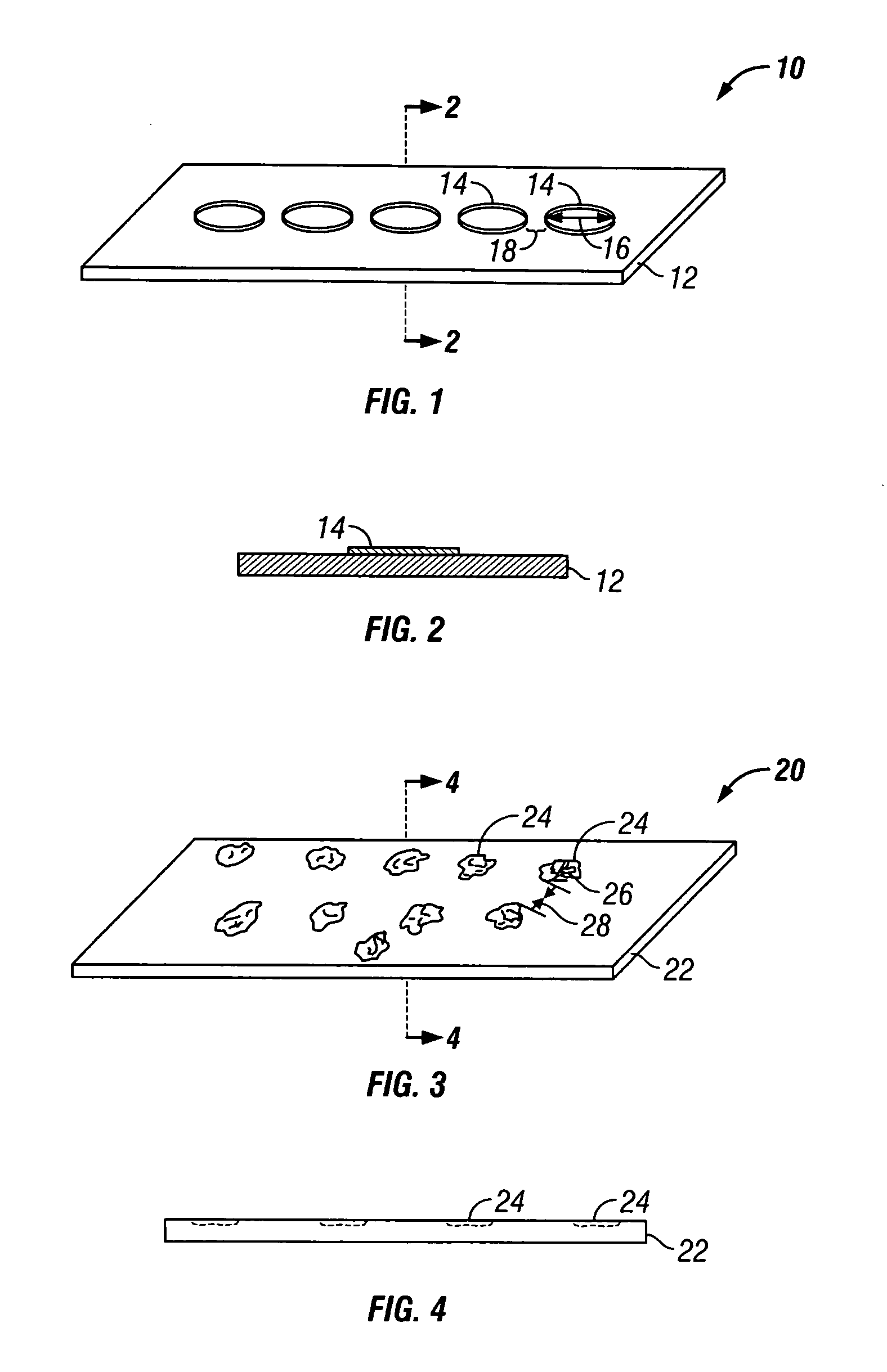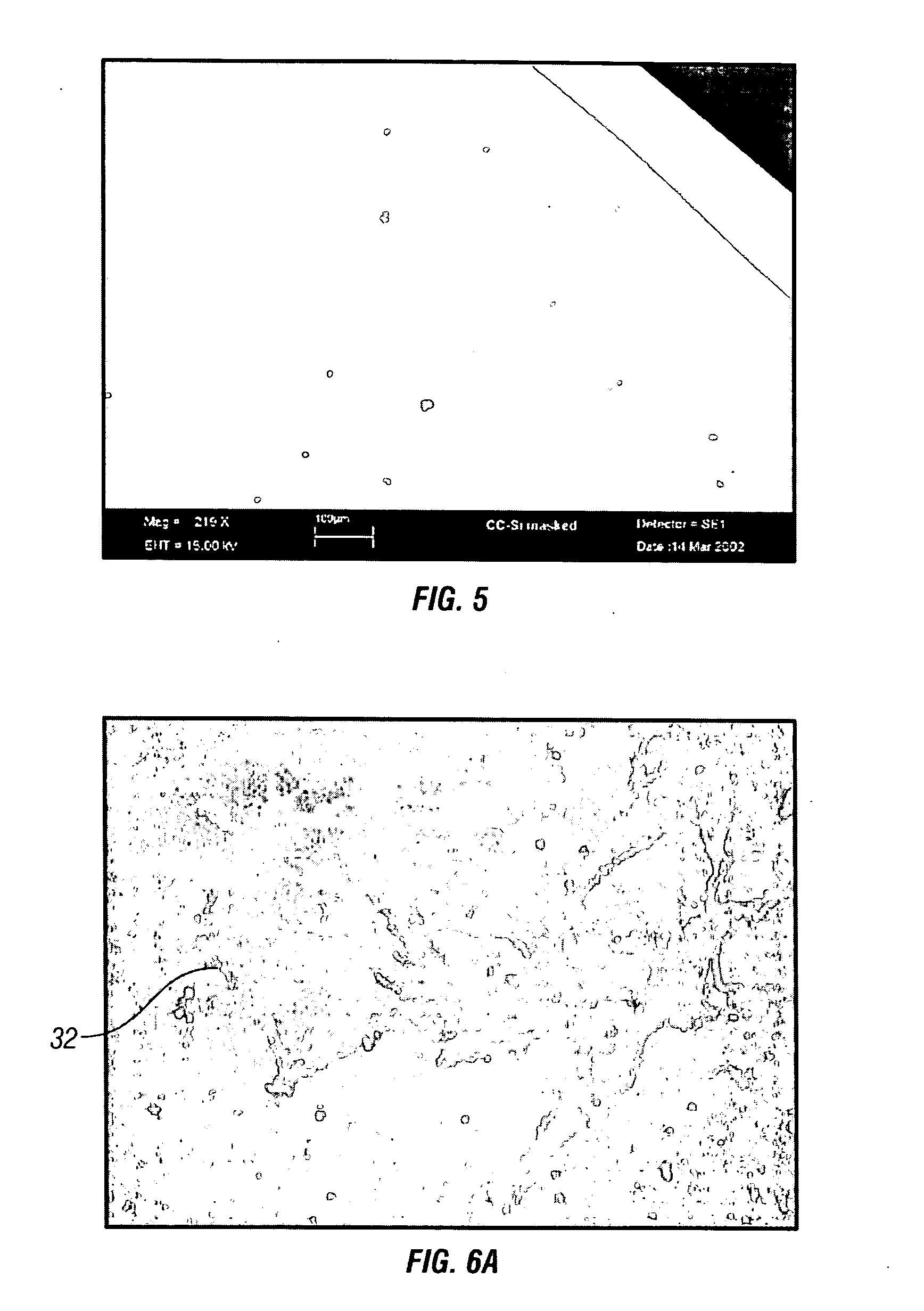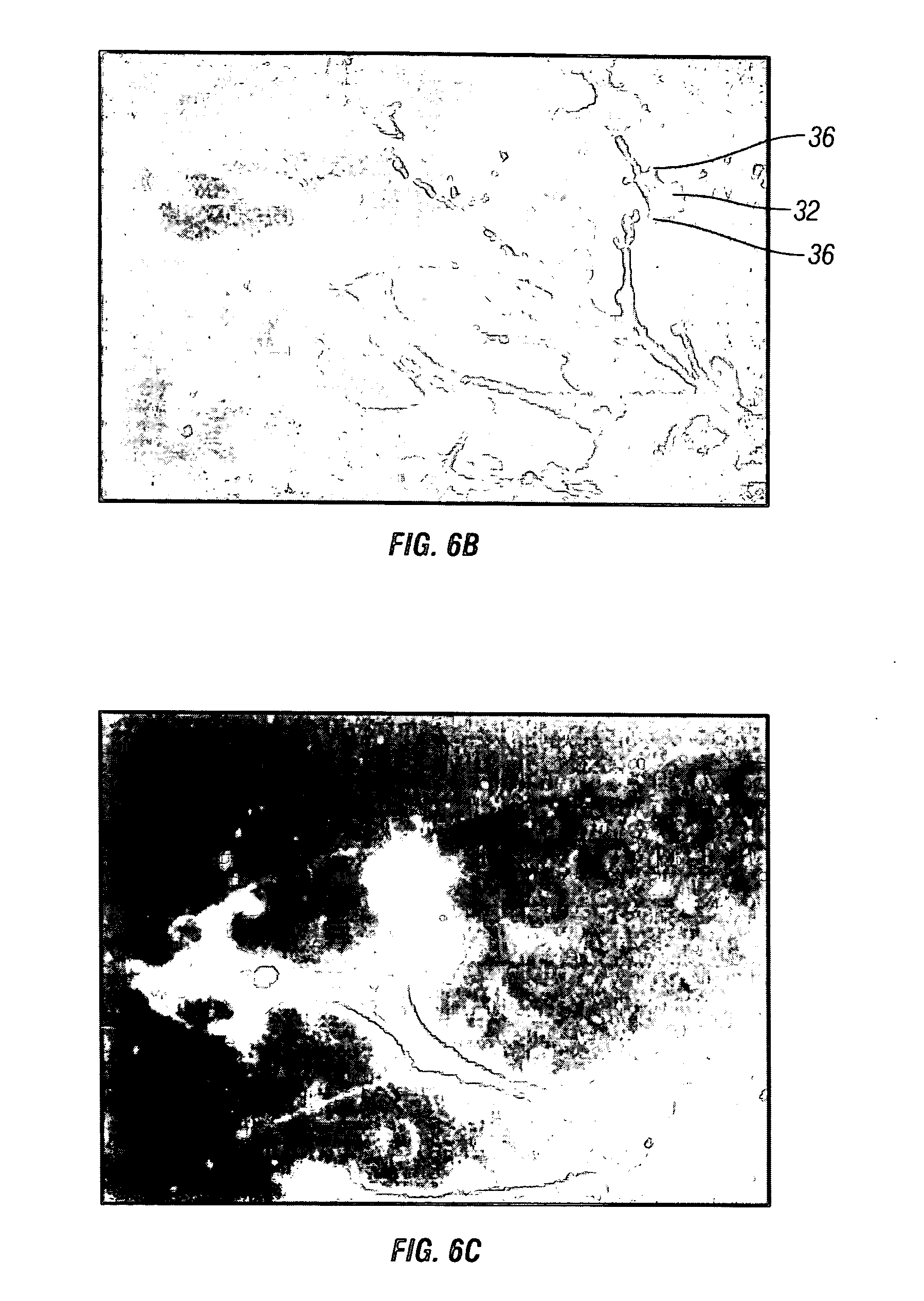Implantable materials having engineered surfaces and method of making same
a technology of engineered surfaces and implants, applied in the field of implants, can solve the problems of insufficient elicitation of sufficient healing response, insufficient incorporation of tissue onto implants, and significant adverse effects of fibrous encapsulation on implants, and conventional biomaterials have proved inadequate in eliciting sufficient healing respons
- Summary
- Abstract
- Description
- Claims
- Application Information
AI Technical Summary
Problems solved by technology
Method used
Image
Examples
example 1
[0055] Nickel-titanium sheets were heated to oxidize titanium present at the surface of the sheet. Pattern masks fabricated from machined metal were laser drilled a pattern of holes having diameters ranging from 15 μm to 50 μm, with a single diameter of holes on each pattern mask. A single pattern mask was placed over a single nickel-titanium sheet and the assembly was exposed to high intensity ultra-violet irradiation. After UV irradiation, the irradiated nickel-titanium sheet was placed on a fully endothelialized test surface and maintained at 37° C. under simulated in vivo flow conditions and under static flow conditions. Qualitative observations were periodically made and it was found that endothelial cells bound to the pattern of UV irradiated affinity domains and migrated across the nickel-titanium sheet by proliferating across the pattern of affinity domains, eventually fully forming an endothelium on the nickel-titanium sheet.
PUM
| Property | Measurement | Unit |
|---|---|---|
| Length | aaaaa | aaaaa |
| Length | aaaaa | aaaaa |
| Thickness | aaaaa | aaaaa |
Abstract
Description
Claims
Application Information
 Login to View More
Login to View More - R&D
- Intellectual Property
- Life Sciences
- Materials
- Tech Scout
- Unparalleled Data Quality
- Higher Quality Content
- 60% Fewer Hallucinations
Browse by: Latest US Patents, China's latest patents, Technical Efficacy Thesaurus, Application Domain, Technology Topic, Popular Technical Reports.
© 2025 PatSnap. All rights reserved.Legal|Privacy policy|Modern Slavery Act Transparency Statement|Sitemap|About US| Contact US: help@patsnap.com



